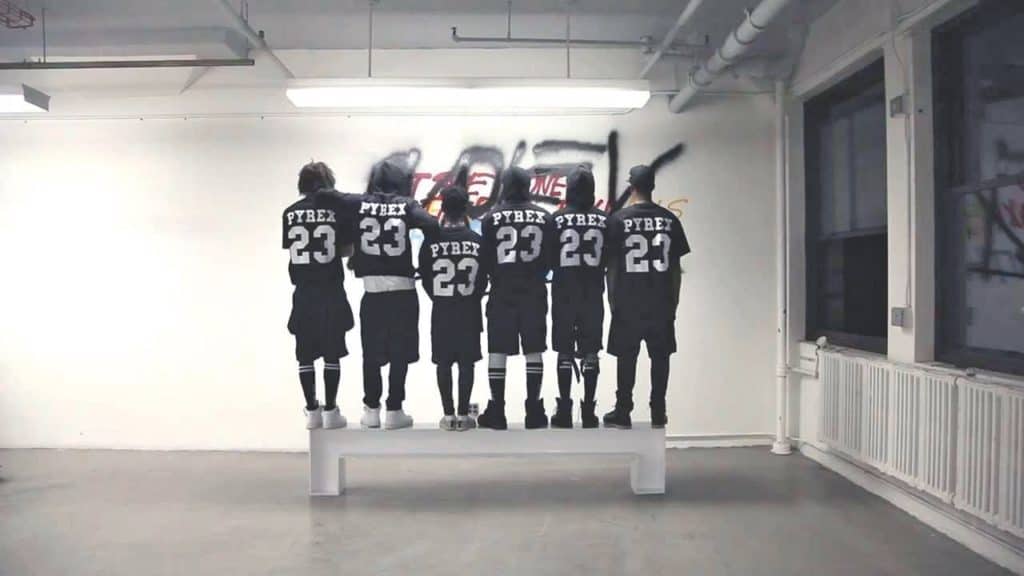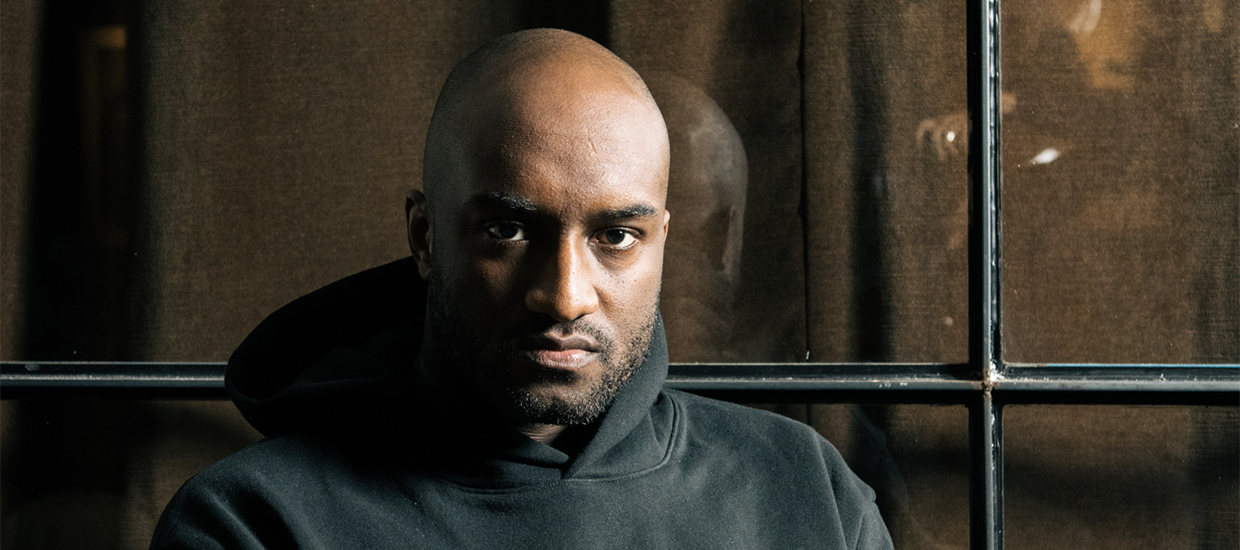PHOTO BY GABRIELA HERMAN
Inside the Museum of Contemporary Art Chicago, a yellow neon sign declares, “You’re obviously in the wrong place.” But Virgil Abloh, the men’s artistic director for Louis Vuitton, finds himself very much in the right place at the right time: as the subject of a mid-career retrospective, Virgil Abloh: Figures of Speech. The show, which opens this month, highlights the multihyphenate 38-year-old artist’s creative endeavors, ranging from fashion and architecture to music, photography, painting, sculpture, and graphic design.
“Everyone asks the same thing: How do you do it all? One day you’re making fashion, the next day you’re painting, the next day you’re DJ-ing,” Abloh says one spring afternoon, after spending the morning at the museum working on the show. “I feel that this exhibit is finally the accumulation of an answer of who I am as a person.”
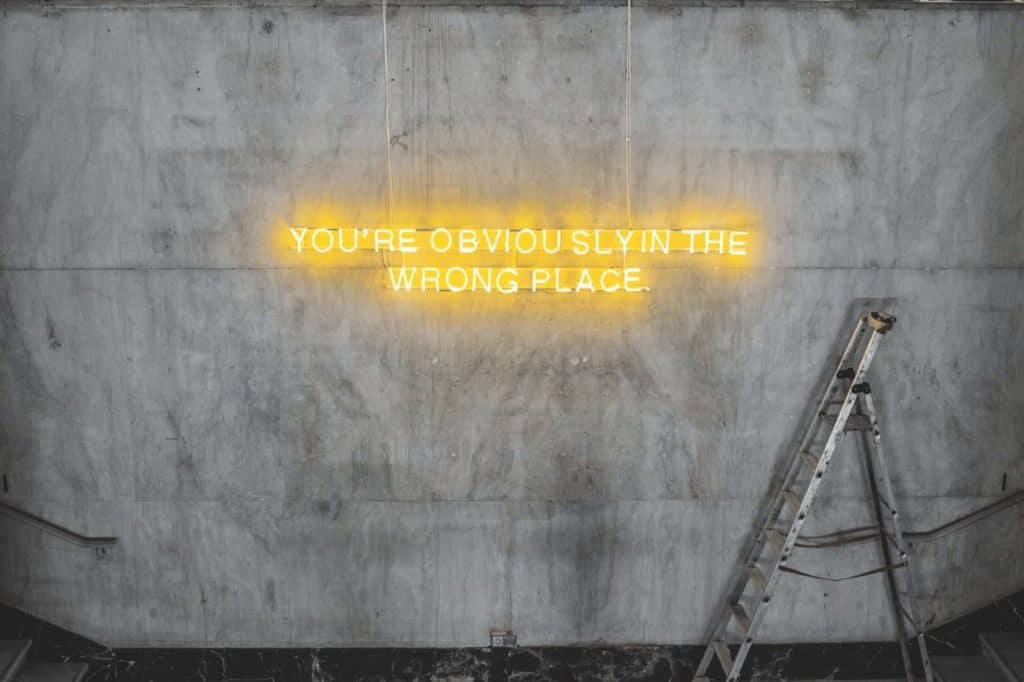
Having a career retrospective before 40 is no small feat, but the Illinois native has turned luxury fashion upside down over the last decade, first with Off-White, the high-end streetwear brand he founded in 2013, and then with his appointment as Louis Vuitton’s first African-American lead designer in 2018. Figures of Speech follows him from his beginnings as a music- and skating-obsessed Midwestern teen to his career-making collaborations with Kanye West to his current iteration as a globe-trotting fashion designer and DJ (stage name Flat White) who relays ideas primarily through his phone. “He is a really fresh new voice who is bringing ideas that he’s learned from the streetwear community and culture to these other art forms,” says Michael Darling, MCA’s chief curator. “There’s a turning point in the zeitgeist that he seems to represent.”
One could argue that Abloh’s influence comes from his outsider status. He was born to Ghanaian immigrants in Rockford, Illinois, and while he learned how to sew from his seamstress mother, that was the extent of his fashion training. He studied engineering and architecture, until a fortuitous meeting with West in the early aughts led to a slew of projects via the rapper’s creative agency.
Soon after Abloh launched Off-White, brands like Nike and Rimowa began courting him. Part of his genius is his use of irony, which fits this era of memes and satiric headlines. He recently collaborated with Ikea on a series of rugs, including one with “Still Loading” woven across a semi-pixelated landscape—a reminder of our technology-dependent culture.
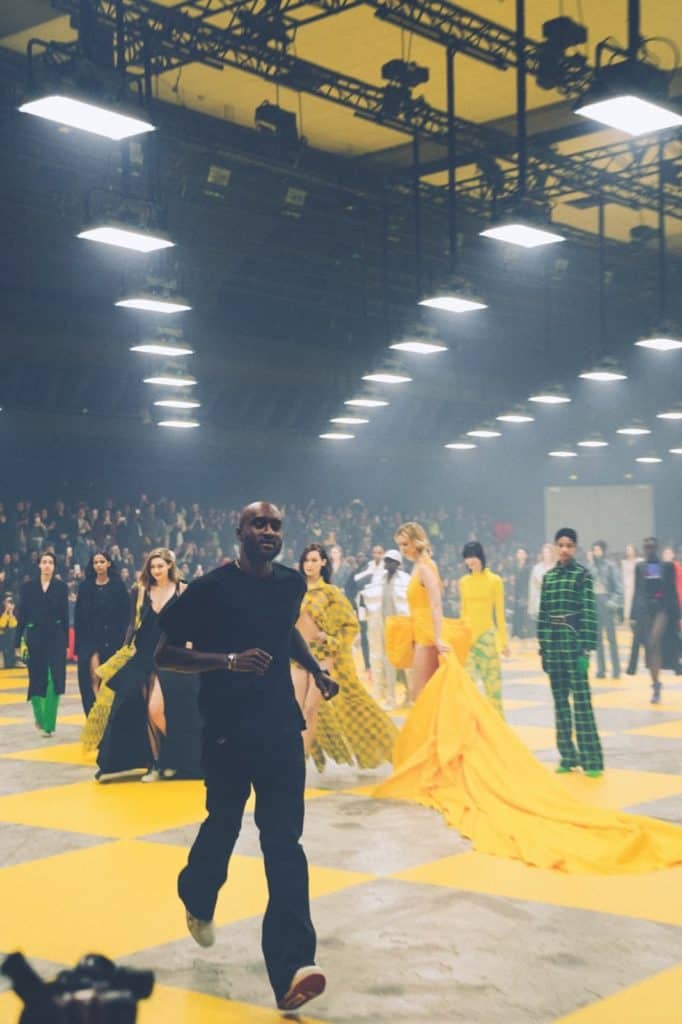
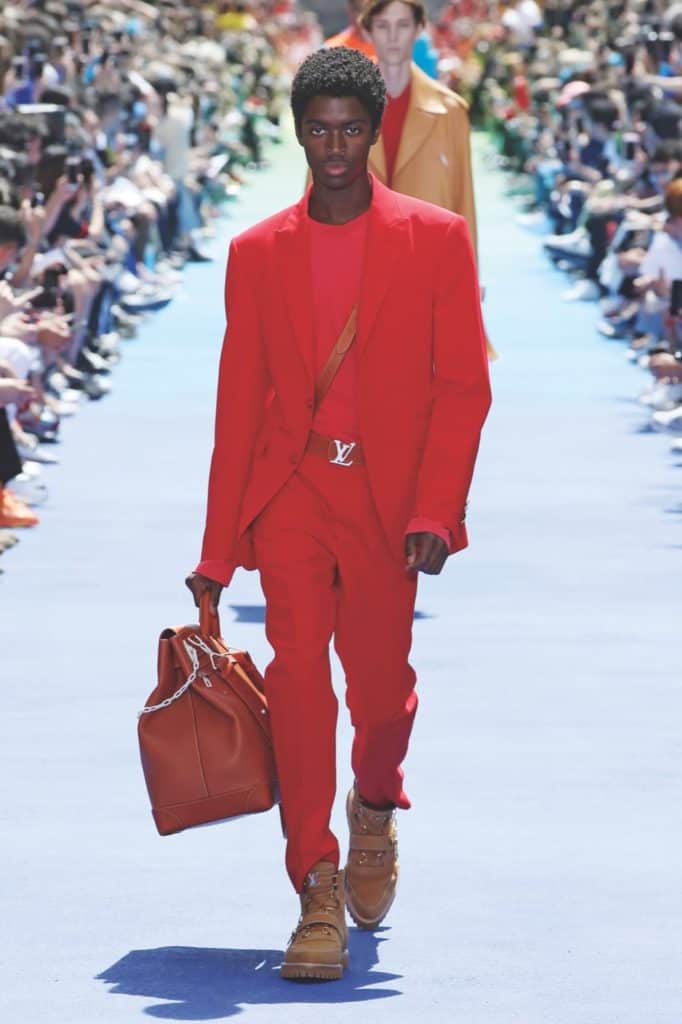
A similarly tongue-in-cheek ethos has permeated his two Louis Vuitton collections. The Land of Oz inspired his debut spring-summer 2019 collection, which featured sweaters with silhouettes of Dorothy and Co. and neon leather harnesses (a sparkly version of which Timothée Chalamet wore at the 2019 Golden Globes). Abloh has referred to the collection as “the Dark Side of the Rainbow.”
“It’s been a quick learning curve,” Abloh says of his time at the fashion house. “I’m finding a way for it to come natural to me.” While Abloh has said that he designs Louis Vuitton for his 38-year-old self and Off-White for his 17-year-old self, in preparing the retrospective, he discovered a synergy between the two—one that shows how naturally his youthful energy flows through all of his work. “What I found in this process of going through my archive,” he says, “is that there’s an alarming amount of coherence and consistency that exists.”
Much of Abloh’s success stems from steering that energy into his metacool lifestyle. Last year, the global fashion search engine Lyst named Off-White the world’s hottest brand, thanks in part to Abloh’s avid use of social media and his legions of millennial fans, including such celebrities as Justin Bieber and Rihanna. His followers are after his hallmark deconstruction of streetwear into
something upscale yet louche (see the spring collection’s pairing of snake print, highlighter-yellow jogger pants and a blazer emblazoned with “Off” across the torso). The MCA exhibit’s title reflects Abloh’s signature use of text throughout his work. He often samples
other designers, in an almost performance-art style that has come with accusations of plagiarism—to which Abloh replies, “Duchamp is my lawyer.” For Figures, he designed a rug woven with a critic’s quote about his appropriation of Ralph Lauren’s work.
Meteoric though his rise has been, Abloh, in true Midwestern style, takes it in stride. “It’s not my sensibility to absorb outside acclaim,” he explains. He is more interested in employing his voice as a beacon of change. “I use my career as a tool to show the young people, like, this is a new world.” He invited fashion students to his first Louis Vuitton show, sending them a message: “These sacred grounds between museum or high fashion can also be occupied by you, coming from middle America.”
